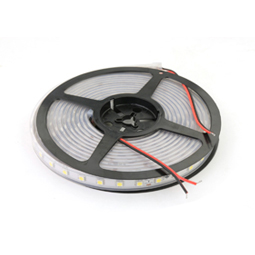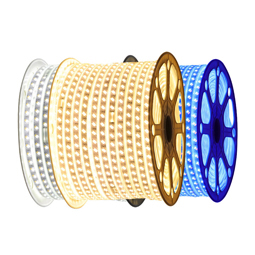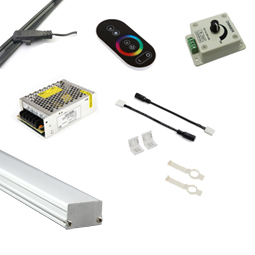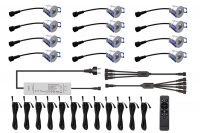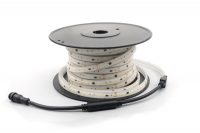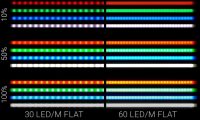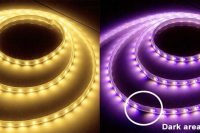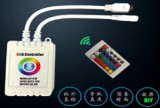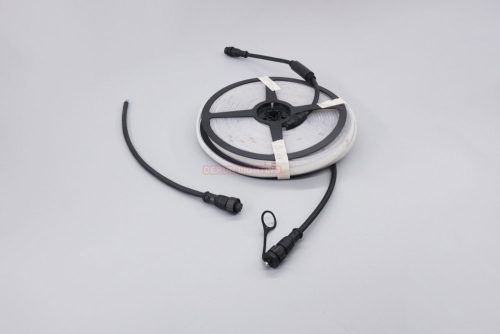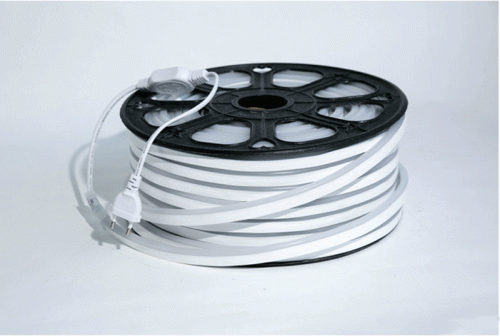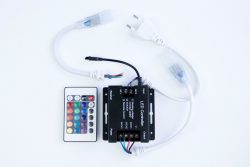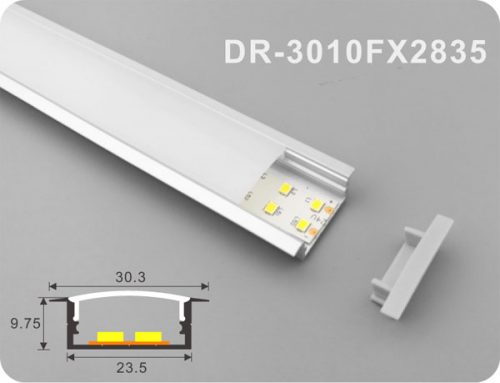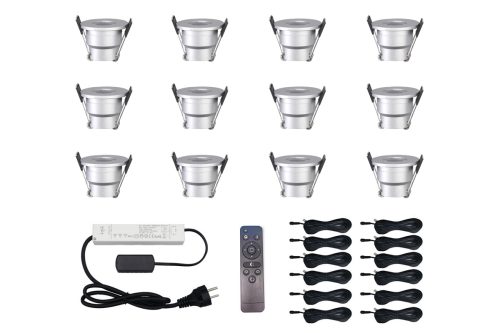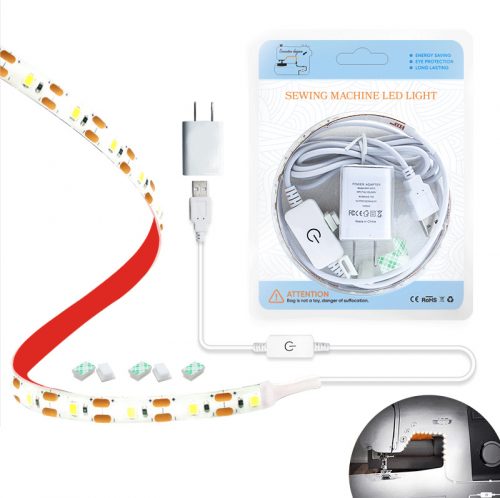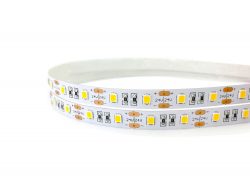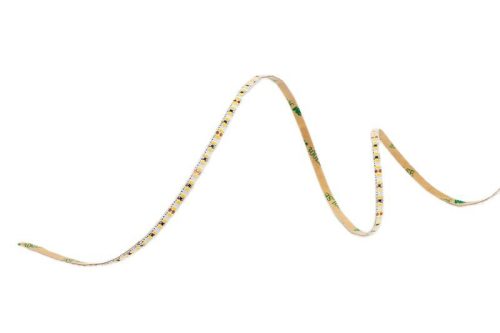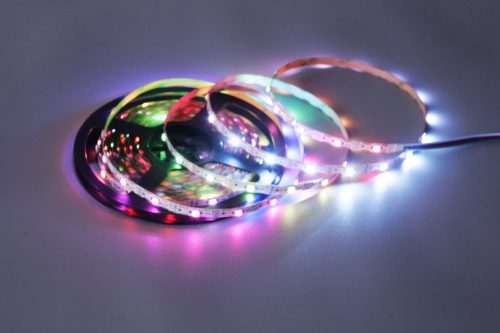Welcome to a new era in art lighting design! Today, we will explore an eco-friendly and efficient lighting solution—solar light strips. As global awareness of sustainable energy and environmental consciousness grows, solar light strips are becoming increasingly popular in art lighting design. They not only reduce carbon emissions but also add a touch of green brilliance to our urban landscapes.

1. How Solar Light Strips Work
The magic of solar light strips lies in their photovoltaic panels and LED lights. Photovoltaic panels are made from semiconductor materials like silicon. When photons from sunlight strike these materials, electrons are excited, creating an electric current—a process known as the photovoltaic effect. This current is stored in batteries and regulated by smart controllers to provide power during nighttime or cloudy conditions.
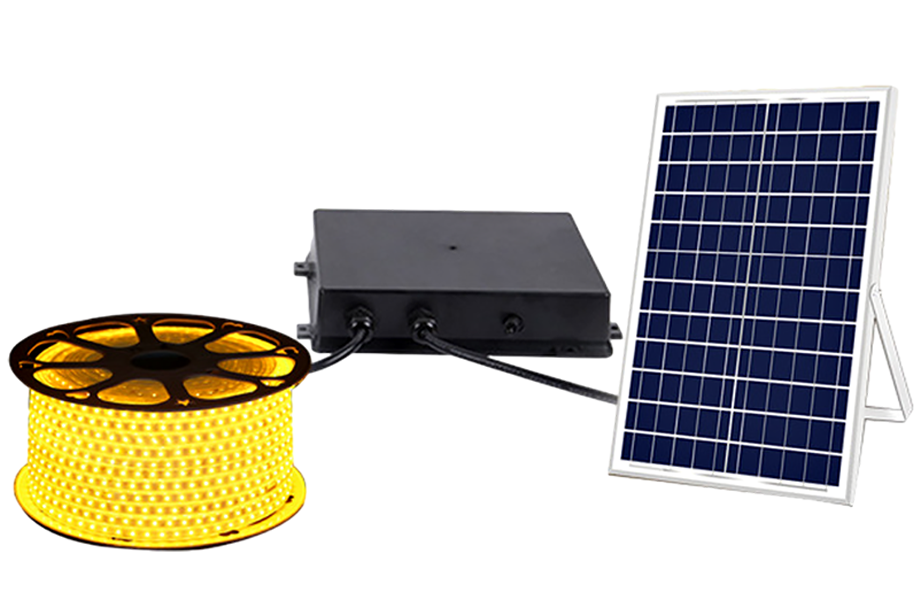
LED lights serve as the light source for solar light strips. Compared to traditional bulbs, LED lights are not only brighter but also more energy-efficient and durable. Combined with the clean energy supply from photovoltaic panels, solar light strips present a highly promising green lighting solution.
2. Unique Advantages of Solar Light Strips in Art Lighting
– Environmental Sustainability
Utilizing solar light strips relies entirely on solar energy, eliminating the need for traditional electrical resources. This significantly reduces emissions of greenhouse gases like carbon dioxide. For example, the “Ocean of Light” art installation project in San Francisco uses solar light strips to cut down approximately 5 tons of carbon dioxide emissions annually.
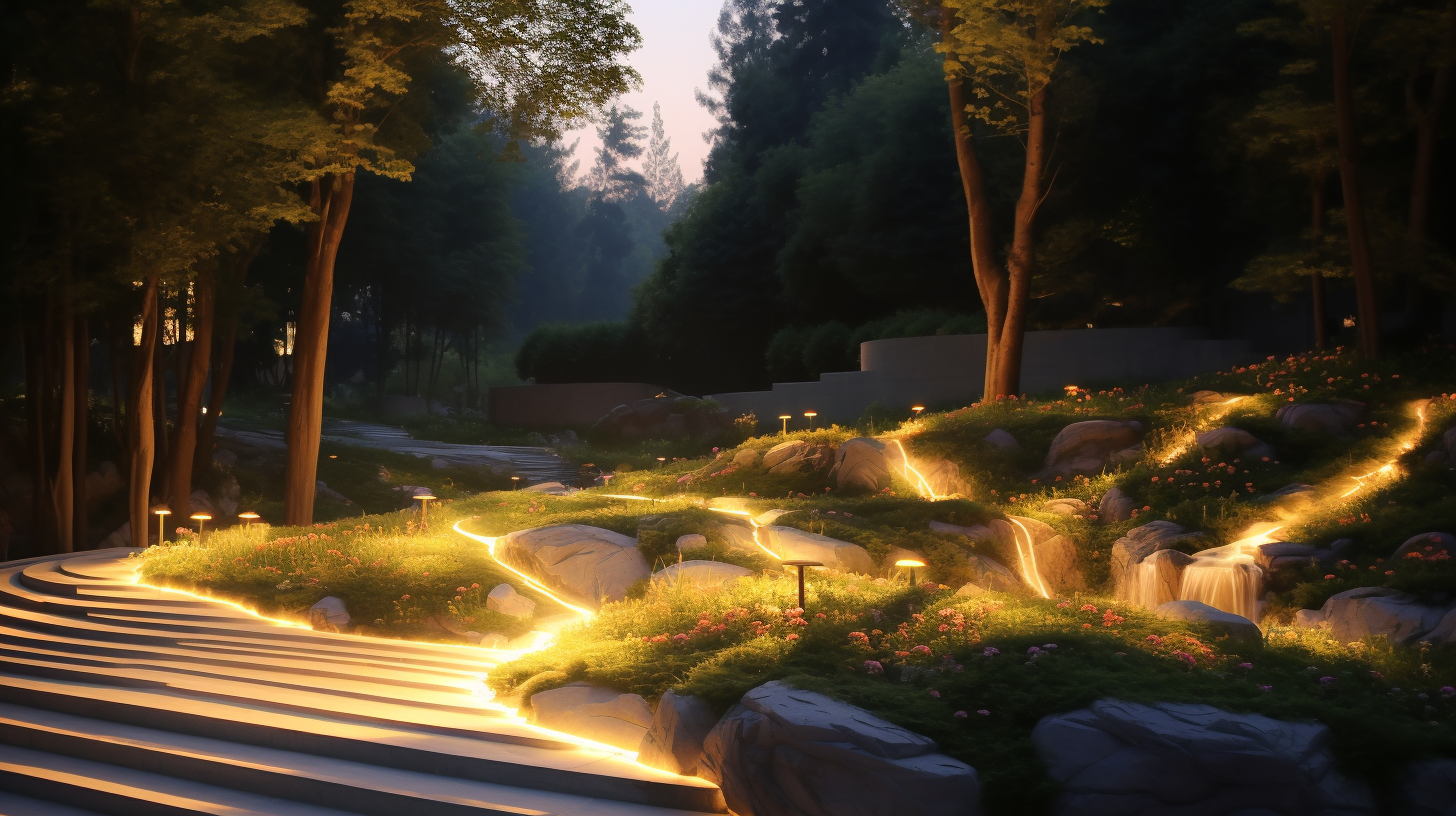
– Cost Efficiency
Although the initial installation cost is higher, solar light strips incur almost no operating costs in the long term. With no electricity bills and low maintenance requirements, their lifespan can extend to several years or even decades. In a neighborhood art project in Brooklyn, New York City, using solar light strips saves about $20,000 annually in electricity costs.
– Flexibility and Convenience
Solar light strips require no complex wiring or electrical infrastructure, making installation extremely simple. By placing photovoltaic panels in sunny locations and connecting them to the light strips and controllers, lighting functionality is easily achieved. At an outdoor music festival in Los Angeles, organizers used solar light strips to quickly set up lighting for the entire stage and audience area.
4. Applications of Solar Light Strips in Art Lighting
– Public Art Installations
In Chicago’s Millennium Park, a large art sculpture named “Dance of Light” employs solar light strips. When night falls, the sculpture appears to dance in the glow of the lights, attracting many visitors.
– Architectural Facade Lighting
An old building in Boston’s historic district uses solar light strips to highlight its unique architectural details. The gentle illumination showcases every window frame and carving, allowing people to appreciate the building’s historical charm even at night.
– Landscape Lighting
In a park landscape design in Seattle, designers used solar light strips to create a dreamy atmosphere. At night, the lights dot the trees and pathways, making it feel like a fairy tale world.
– Temporary Exhibitions and Events
At the Miami Art Festival’s outdoor exhibition, solar light strips facilitated quick setup and teardown. The lights not only illuminated the artworks but also provided safe passage for attendees.
– Residential and Commercial Spaces
In a high-end shopping center in Las Vegas, solar light strips are used for decoration and lighting in the outdoor plaza. At night, the lights complement the fountains and water features, attracting numerous customers.
5. Case Studies of Solar Light Strips in Practical Applications
Case Study 1: Nighttime Art Installations in Central Park, New York
– Project Background: Central Park in New York has always been a popular spot for both residents and tourists. To enhance nighttime activities, the park management decided to install a series of nighttime art installations.
– Design Plan: Artists designed a series of installations called “Dreams Under the Stars,” using solar light strips to create a starry effect among the trees. Photovoltaic panels were cleverly hidden within the tree canopies, absorbing sunlight during the day and illuminating the area at night.
– Implementation Process: The entire installation process took only two days, requiring no cables or disruption to the park’s natural environment.
– Results and Feedback: After the installation was completed, it attracted numerous visitors and was covered by multiple media outlets. The project reduces about 4 tons of carbon dioxide emissions annually and saves a significant amount on electricity costs.
Case Study 2: Architectural Lighting in Boston’s Historic District
– Project Background: Boston’s historic district is a famous tourist attraction with many well-preserved historical buildings. To showcase these buildings at night, the management decided to use an eco-friendly lighting solution.
– Design Plan: Solar light strips were chosen to illuminate the exterior walls and detailed parts of the buildings. Photovoltaic panels were installed on the rooftops, absorbing sunlight during the day and providing power at night.
– Implementation Process: With no need for complex electrical wiring, the installation was completed within a few days. The lighting design was soft and non-intrusive, perfectly highlighting the historical essence of the buildings.
– Results and Feedback: Post-project completion, there was a noticeable increase in visitors, especially at night. The project saves about $15,000 annually in electricity costs and reduces around 3 tons of carbon dioxide emissions.
6. Design Techniques for Solar Light Strips in Art Lighting
– Color and Brightness Control
Smart controllers allow for adjusting the color and brightness of solar light strips, creating various lighting effects. For example, in an outdoor art installation in San Diego, designers used smart controllers to achieve dynamic lighting effects, with lights changing in sync with musical rhythms, providing a mesmerizing visual experience.
– Light and Shadow Effects
Solar light strips can be used to create intricate light and shadow effects. In a park landscape project in San Francisco, designers cleverly arranged the light strips to cast fascinating shadows through trees and sculptures, making visitors feel as if they were in a magical world.
– Interactive Design
Combining sensors and smart control systems, solar light strips can achieve interactive effects. For instance, in a commercial plaza in Los Angeles, designers installed an interactive lighting setup where lights changed as pedestrians walked by, creating a unique interactive experience.
7. Challenges and Solutions for Solar Light Strips
– Weather Dependence
Solar light strips heavily rely on sunlight, which can affect lighting performance during cloudy or rainy weather. To address this, high-efficiency storage systems and backup power sources can be used. In a project in Seattle, designers utilized the latest high-efficiency storage materials to ensure stable lighting even during consecutive rainy days.
– Initial Cost
Although the initial installation cost of solar light strips is high, a long-term cost-benefit analysis reveals their economic advantages. The Boston city government offers subsidies and tax incentives to encourage residents and businesses to adopt solar light strips, significantly reducing upfront investment costs.
– Technical Limitations
With advancements in technology, photovoltaic cells and LED technologies continue to evolve, incorporating more efficient materials and devices into solar light strips. For example, in a study in San Francisco, scientists developed a new flexible photovoltaic material that significantly improved the efficiency and durability of photovoltaic cells.
8. Market Prospects and Future Outlook
– Market Demand Analysis
With growing environmental awareness and technological advancements, the market demand for solar light strips continues to rise. According to market research, the market size for solar light strips is expected to reach $5 billion by 2030, with an annual growth rate exceeding 10%.
– Technological Innovations and Trends
The development of new materials and technologies opens up new prospects for the application of solar light strips. For example, the latest flexible photovoltaic materials not only enhance the efficiency of photovoltaic cells but also can be applied in various complex environments and designs. Additionally, the widespread adoption of smart control systems makes the application of solar light strips more versatile and diverse.
– Policy Support and Social Impact
Government policies and environmental regulations play a crucial role in promoting solar light strips. For instance, the U.S. federal government and state governments have introduced various policies to encourage the use of renewable energy, such as tax incentives and subsidies. These policies not only lower the barrier to using solar light strips but also raise public awareness of environmental protection.
9. Conclusion
In summary, solar light strips hold unique advantages and immense potential in the field of art lighting. They are not only eco-friendly and energy-efficient but also add distinctive artistic charm to our urban landscapes. We urge more designers and project managers to consider and adopt solar light strips, collectively advancing the development of green lighting. Additionally, we encourage every reader to participate in environmental initiatives and contribute to the well-being of our planet.
10. Appendix
Frequently Asked Questions (FAQ)
Q1: Can solar light strips work on cloudy or rainy days?
A: Yes, modern solar light strips are typically equipped with high-efficiency storage systems that can provide lighting even when sunlight is insufficient. Additionally, some projects incorporate backup power sources to supplement energy needs.
Q2: Is the initial cost of installing solar light strips high?
A: While the initial investment is relatively high, the long-term savings make solar light strips a very economical choice since they have almost no operating costs. Many local governments also offer subsidies and tax incentives, further reducing the upfront cost.
Q3: How long do solar light strips last?
A: The lifespan of solar light strips is generally over 10 years, depending on the quality of materials and the operating environment. High-quality photovoltaic cells and LED lights ensure stable, long-term performance.
References and Further Reading
– Smith, J. (2022). “The Future of Solar Lighting.” Journal of Sustainable Design, 15(3), 45-60.
– Green, A. & Brown, R. (2021). “Innovations in Solar-Powered Art Installations.” Environmental Arts Review, 12(2), 102-118.
– U.S. Department of Energy. “Solar Energy Technologies Office.” Accessed at [https://www.energy.gov/eere/solar/solar-energy-technologies-office](https://www.energy.gov/eere/solar/solar-energy-technologies-office)
By elaborating on each point, we aim to provide readers with a deeper understanding of the potential applications of solar light strips in art lighting and to inspire interest and support for this eco-friendly technology. Whether it’s public art installations, architectural lighting, or landscape design, solar light strips showcase their unique charm and broad application prospects. Let’s work together to advance green lighting, adding more beauty and environmental elements to our cities and planet.





